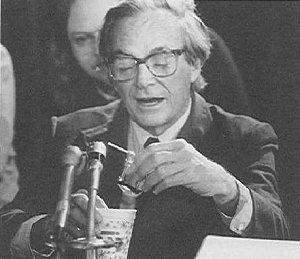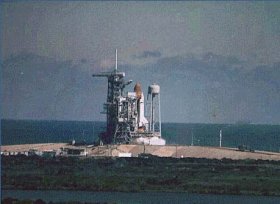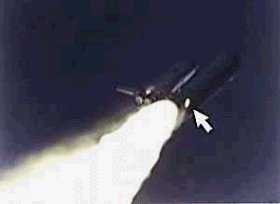|
|
|
After the space shuttle Challenger and its crew were destroyed in a fiery, catastrophic explosion on January 28, 1986, NASA appointed members of the Rogers Commission to investigate the cause of the disaster. When he was asked to be a part of this commission, Feynman rather reluctantly accepted. Little did he know that he would be the one person to discover the exact cause of the explosion.
Feynman was always the inquisitive type; he had to have the facts. To find out what happened to the shuttle, he went straight to the people who put the shuttle together. He learned many things from these people that would help him to discover the cause of the explosion; and also information that helped him realize what a risky business flying a shuttle really is. NASA officials said that the chance of failure of the shuttle was about 1 in 100,000; Feynman found that this number was actually closer to 1 in 100. He also learned that rubber used to seal the solid rocket booster joints using O-rings, failed to expand when the temperature was at or below 32 degrees F (0 degrees C). The temperature at the time of the Challenger liftoff was 32 degrees F.

Feynman’s famous C-clamp experiment
Feynman now believed that he had the solution, but to test it, he dropped a piece of the O-ring material, squeezed with a C-clamp to simulate the actual conditions of the shuttle, into a glass of ice water. Ice, of course, is 32 degrees F. At this point one needs to understand exactly what role the O-rings play in the solid rocket booster (SRB) joints. When the material in the SRB start to heat up, it expands and pushes against the sides of the SRB. If there is an opening in a joint in the SRB, the gas tries to escape through that opening (think of it like water in a tea kettle escaping through the spout.) This leak in the Challenger’s SRB was easily visible as a small flicker in a launch photo. This flicker turned into a flame and began heating the fuel tank, which then ruptured. When this happened, the fuel tank released liquid hydrogen into the atmosphere where it exploded.
As Feynman explained, because the O-rings cannot expand in 32 degree weather, the gas finds gaps in the joints, which led to the explosion of the booster and then the shuttle itself.
Read a recollection of Feynman by Roger M. Boisjoly.
Read Feynman’s Personal Observations on the Reliability of the Shuttle.

